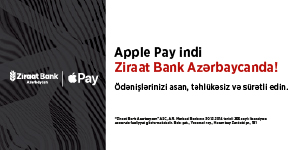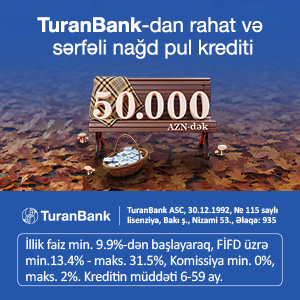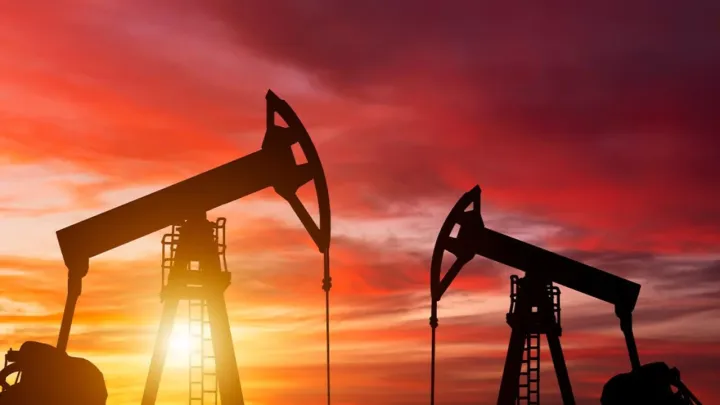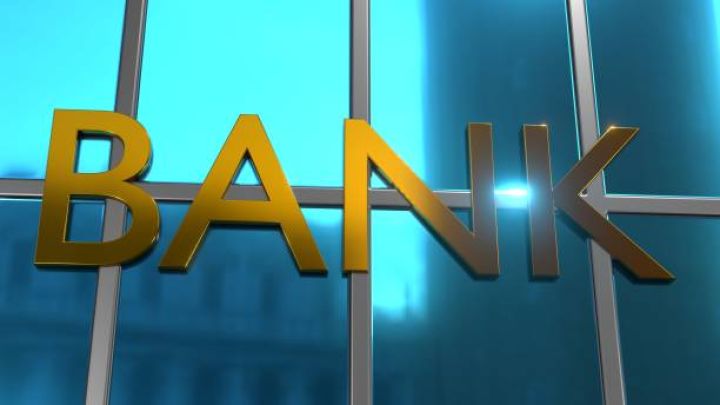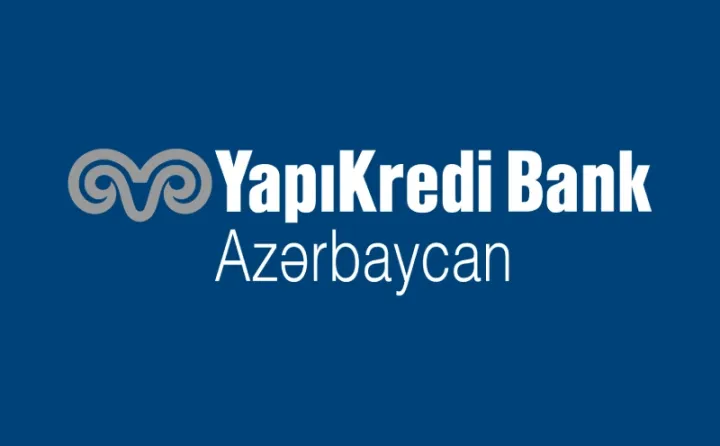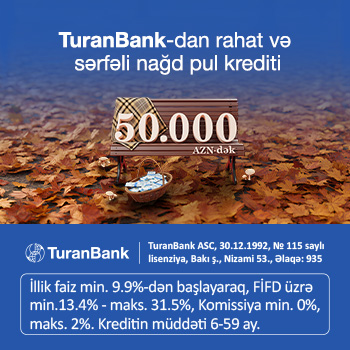Azərbaycanın reytinq proqnozu "mənfi"dən "stabil"ə yüksəldi
Proqnozunun yaxşılaşdırması - Qarabağ müharibəsinin bitməsi və üçtərəfli atəşkəs razılaşmanın imzalanması nəticəsində ölkədə ümumi təhlükəsizliyin, maliyyə sektorunun və tədiyyə balansının risklərinin azalması ilə əsaslandırılıb.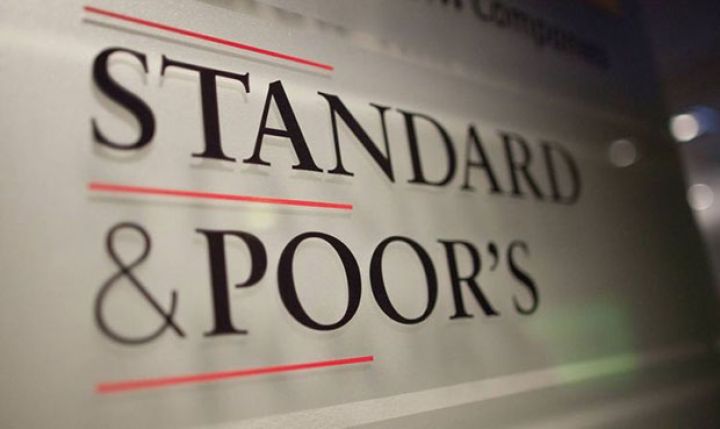
"S&P Global Ratings" reytinq agentliyi Azərbaycanın yerli və xarici valyutada uzunmüddətli suveren kredit reytinqini "BB+/B" səviyyəsində təsdiqləyib, reytinq üzrə proqnozu isə "mənfi"dən "stabil"ə yüksəldib.
Reytinq agentliyinin yaydığı məlumata görə, Azərbaycanın beynəlxalq kredit reytinqinin və reytinq üzrə proqnozunun yaxşılaşdırmasını "S&P"nin Qarabağ müharibəsinin bitməsi və üçtərəfli atəşkəs razılaşmanın imzalanması nəticəsində ölkədə ümumi təhlükəsizliyin, maliyyə sektorunun və tədiyyə balansının risklərinin azalması ilə əsaslandırıb.
Agentliyin reytinq üzrə proqnozu "mənfi"dən "stabil"ə qaldırılması "S&P"nin Azərbaycanda iqtisadi aktivliyin artması və karbohidrogen qiymətlərinin nisbətən yüksək olmasının növbəti 1 il ərzində ölkənin güclü maliyyə və xarici mövqelərinin pisləşməsinin qarşısını alacağı üzrə proqnozunu əks etdirir.
"Proqnozları nəzərə alaraq, Azərbaycanın kredit profilinə iqtisadi və maliyyə sektorlarından əhəmiyyətli risklər gözləmirik. Artan geosiyasi qeyri-müəyyənliyə baxmayaraq, əhalinin əmanətlərinin xarici valyutaya çevrilməsində və ya bank sistemindən tamamilə çıxarılmasında heç bir artım olmayıb", - deyə agentlik bildirir.
"S&P"yə görə, karbohidrogen qiymətlərinin aşağı olmasına və COVID-19-un yaratdığı iqtisadi geriləməyə baxmayaraq, Azərbaycanın maliyyə və xarici mövqeləri "BB" kateqoriyasında qiymətləndirilən ən güclü ölkələr arasında qalır: "2021-2024-cü illərdə ÜDM-in orta hesabla 74%-i səviyyəsində proqnozlaşdırılan böyük likvid dövlət aktivləri iqtisadi və maliyyə şoklarına qarşı bufer təmin etməyə davam edəcək. Neft qiymətləri və hasilat həcmləri üzrə proqnozlarımızı əks etdirərək və Azərbaycanın "OPEC+" sazişində iştirakını nəzərə alaraq, xarici daxilolmaların və maliyyə gəlirlərinin orta müddət ərzində tədricən artacağını gözləyirik. Hökumətin Qarabağda idxala yönəlmiş yenidənqurma tədbirlərinin maliyyə və xarici axınlara mülayim təsir göstərəcəyini gözləyirik".
Agentlik ölkənin reytinqini gələcəkdə aşağı və yuxarı qaldıra biləcək faktorlarını da sadalayıb.
Hərbi qarşıdurmanın başqa bir başlanğıcı Azərbaycanın təhlükəsizliyinə, tədiyyə balansına və ya daxili maliyyə sisteminin sabitliyinə pis təsir edərsə, reytinqlər endirilə bilər. Bundan əlavə, mümkün azalma üçün səbəblər arasında Azərbaycanın maliyyə və xarici balanslarının gözləniləndən aşağı düşməsi göstərilir.
Əksinə, xarici balansların profisitlərinin gözləniləndən yüksək olarsa və daha çox xarici aktiv toplanmasına gətirib çıxararsa, kredit reytinqi yüksəldilə bilər. Bu, karbohidrogen gəlirlərinin nəzərəçarpacaq dərəcədə artımı halında baş verə bilər: "Əlavə olaraq, Azərbaycan bəzi maliyyə maneələrini aradan qaldıran islahatlar həyata keçirərsə, o cümlədən yüksək dollarlaşma və hələ də zəif olan daxili bank sistemindən irəli gələn pul siyasətinin effektivliyinə dair məhdudiyyətlər tətbiq edərsə, reytinqlər yüksəldilə bilər".
Marja.az Telegramda: https://t.me/marjaaz
XXX
Azerbaijan Outlook Revised To Stable From Negative On Receding Risks From Nagorno-Karabakh Conflict; Ratings Affirmed
-We expect the ceasefire between Azerbaijan and Armenia beginning Nov. 10, 2020, will broadly hold.
-As a result, we believe the previously heightened risks of residents' accelerated flight to foreign currency and the government's disorderly exit from a managed exchange rate regime have subsided.
-Furthermore, we believe Azerbaijan's strong fiscal and external sheets provide a buffer against economic and external shocks.
-We are therefore revising our outlook on Azerbaijan to stable from negative and affirming our 'BB+/B' long- and short-term sovereign credit ratings.
Rating Action
On Jan. 22, 2021, S&P Global Ratings revised its outlook on Azerbaijan to stable from negative and affirmed its long- and short-term foreign and local currency sovereign credit ratings at 'BB+/B'.
Outlook
The stable outlook reflects our expectation that the ceasefire agreement between Azerbaijan, Armenia, and Russia will broadly hold, underpinning a reduction in war-related security, financial sector, and balance-of-payments risks.
It also reflects our view that a rebound in economic activity and comparatively higher hydrocarbon prices will, over the next 12 months, prevent Azerbaijan's fiscal and external positions from deteriorating materially from strong levels.
Downside scenario
We could lower the ratings if another outbreak of military confrontation leads to a deterioration in Azerbaijan's security situation, its balance of payments position, or the stability of the domestic financial system. This is not our baseline scenario.
Beyond the recent conflict, we could also lower the ratings if Azerbaijan's fiscal and external balances weaken more than we project. This could happen, for example, as a result of a substantial decline in hydrocarbon revenue, increased fiscal pressure from the COVID-19 pandemic-induced economic slowdown, or higher government capital expenditure compared with our baseline assumptions.
Rating pressure could also build if Azerbaijan's real per capita GDP growth falls further below that of peers with similar levels of economic development.
Upside scenario
Conversely, we could consider an upgrade if external surpluses were higher than we expect, resulting in further external asset accumulation. This could happen, for example, if hydrocarbon revenue increases markedly.
Ratings upside could also build if the government implements reforms addressing some of Azerbaijan's structural impediments, including constraints to monetary policy effectiveness stemming from high financial dollarization and a still-weak domestic banking system.
Rationale
A six-week-long war between Azerbaijan and Armenia in the Nagorno Karabakh region ended on Nov. 10, 2020, with a ceasefire agreement brokered by Russia. Under the peace deal, Russia has deployed about 2,000 peacekeepers to the region for at least five years. Despite many still-unresolved political issues and incidents of sporadic fighting, we expect the ceasefire will broadly hold, with Russia's peacekeeping operations helping prevent another large-scale armed conflict. Accordingly, we do not expect material economic and financial sector risks to Azerbaijan's credit profile from the conflict over our rating outlook horizon. Despite heightened geopolitical uncertainties, there has not been any increased conversion of domestic residents' savings to foreign currency, or their outright withdrawal from the banking system.
We consider that Azerbaijan's fiscal and external stock positions remain among the strongest of sovereigns we rate in the 'BB' category, despite lower hydrocarbon prices and the COVID-19-induced economic slowdown. Large liquid government assets, projected at an average of about 74% of GDP in 2021-2024, will continue to provide a buffer against economic and financial shocks. Reflecting our oil price and production assumptions, and considering Azerbaijan's participation in the OPEC+ production cut agreement, we expect external receipts and fiscal revenue will gradually rise over the medium term. We expect that government's import-driven reconstruction measures in the territories surrounding Nagorno-Karabakh will, for now, have a moderate impact on fiscal and external flows.
Our ratings on Azerbaijan remain constrained by still-weak institutional effectiveness, the country's narrow and concentrated economic base with a moderate growth trend, and limited monetary policy flexibility.
Institutional and economic profile: Economic activity will rebound gradually, subject to the prolonged impact of the pandemic and global oil demand
We expect the ceasefire agreement reached between Azerbaijan, Armenia, and Russia to end the war in Nagorno-Karabakh will broadly hold.
Following the COVID-19-induced shocks and oil price collapse, Azerbaijan's economy will gradually rebound from 2021, supported by a recovery in domestic consumption aided by fiscal stimulus, higher public investment, and an increase in hydrocarbon exports.
We project GDP will expand by 2.1% in 2021 and average 3.9% over the remainder of our forecast horizon.
Following a six-week-long war in Nagorno-Karabakh that broke out in late September, Azerbaijan and Armenia agreed to a ceasefire, brokered by Russia, that took effect on Nov. 10, 2020. The ceasefire agreement's provisions included a phased withdrawal of Armenian military forces from three territories surrounding Nagorno-Karabakh and their handover to Azerbaijan by Dec. 1, 2020. About 2,000 Russian peacekeepers have been mobilized to the region to patrol the front line and a transport corridor connecting Armenia to Khankendi (Stepanakert), Nagorno-Karabakh's largest city.
Our baseline expectation is that the ceasefire will hold, supported by Russia's peacekeeping operations. We do not expect a return to a full armed confrontation. However, there is still limited visibility on a sustainable political solution to the long-standing conflict. Increased challenges to the Armenian government amid domestic protests against the agreement and a polarized political landscape could pose implementation risks to the Russian-brokered truce.
In our opinion, Azerbaijan's institutions are still developing. They are characterized by highly centralized decision-making and lack transparency, which can make policy responses difficult to predict. Political power remains concentrated in the president and his administration, with limited checks and balances. In our view, structural reform and economic diversification efforts in recent years have yielded only limited results.
Azerbaijan derives about 40% of its GDP, 50% of government revenue, and more than 90% of exports from the hydrocarbons sector. This makes Azerbaijan's concentrated economy and credit profile vulnerable to volatility in oil prices, despite the government's policy to encourage non-oil private-sector growth.
The COVID-19 pandemic and a drop in oil prices has exerted significant pressure on Azerbaijan's economy, weighing on the hydrocarbons, retail, hospitality, and construction sectors. In 2020, the government imposed and extended quarantine regimes with different modifications. The current special quarantine regime remains effective until Jan. 31.
Following a sharp GDP contraction estimated at about 5% in 2020, we expect economic activity will gradually recover from 2021. We project GDP will expand by about 2.1% in 2021 and average 3.9% over 2022-2024. Growth will be supported by a rebound in hydrocarbon exports, recovery in domestic consumption aided by fiscal stimulus, and higher public investment associated with the government's investments in Nagorno-Karabakh. Downside risks to our projections remain due to the uncertainty of the duration of the pandemic and its impact on Azerbaijan's economy.
In line with Azerbaijan's compliance with the OPEC+ production cut agreement in April 2020, we expect that the country's daily crude oil production (excluding condensate) will average about 610,000 barrels (bbl) in 2021, broadly in line with the 2020 level. We expect crude oil production will gradually resume to 2019 levels of 713,000 bbl after April 2022, when the current OPEC+ production deal is terminated. The January 2021 OPEC meeting confirmed the alliance's cautious stance in relation to an increase in production levels in the face of uncertain pandemic developments and their impact on oil demand. Our assumptions are subject to uncertainties in relation to global demand dynamics and how quickly Azerbaijan can return to its full production capacity. Long-term questions have also emerged over the stability of production from the Azeri-Chirag-Gunashli oilfield (Azerbaijan's biggest), which, given its age, has seen a natural decline in output in recent years.
Flexibility and performance profile: Strong external and fiscal net asset positions
Azerbaijan's strong fiscal and external net asset positions will remain core rating strengths.
In view of higher hydrocarbon exports, we project Azerbaijan's external surpluses will rise from 2022.
However, due to increased capital expenditure, the general government fiscal balance will run only marginal surpluses from 2023.
We assume Azerbaijan will retain the manat's de facto peg to the U.S dollar.
We assume an average Brent oil price of $50/bbl in 2021 and 2022 and $55 in 2023 and beyond. Our assumptions compare with an average oil price of about $41/bbl in 2020 (see "S&P Global Ratings Revises Oil And Natural Gas Price Assumptions," published Sept. 16, 2020, on RatingsDirect).
In line with our oil price assumptions and Azerbaijan's compliance with the OPEC+ production cut agreement, we expect the current account balance will run a marginal surplus in 2021, before rebounding to an average surplus of about 4% of GDP over the remainder of our forecast horizon through 2024. The launch of the SDII gas project and its expansion over the next three-to-four years should also support Azerbaijan's external performance. Partially offsetting this, our projections also reflect a rebound in imports on account of higher domestic consumption and the government's planned reconstruction activities in Nagorno Karabakh. Due to a substantial decline in hydrocarbon exports, we estimate Azerbaijan's current account deficit at about 3.7% of GDP in 2020 compared with the strong surplus of 9.1% in the previous year.
Despite oil-driven external volatility, Azerbaijan's strong external balance sheet will remain a core rating strength, reinforced by the large amount of foreign assets accumulated in the sovereign wealth fund SOFAZ. We estimate external liquid assets will surpass external debt by 90% of current account payments in 2021, and will remain broadly stable through 2024. Azerbaijan will remain vulnerable to potential terms-of-trade volatility. Nevertheless, in our view, its large net external asset position will serve as a buffer to mitigate the potential adverse effects of economic cycles on domestic economic development.
Broadly mirroring developments on the external side, Azerbaijan's fiscal general government deficit will narrow to about 2.0% of GDP in 2021 from an estimated 6.4% in 2020. In the remainder of our forecast horizon through 2024, we project the fiscal balance will gradually revert to a surplus of 1% of GDP. We expect relatively higher oil prices, a staged increase in crude oil production, and a pickup in non-hydrocarbon revenue as the pandemic's effects abate will support fiscal revenue. However, partially offsetting this trend, general government expenditure will rise to higher levels than previously assumed, largely due to the government's reconstruction measures in the Nagorno-Karabakh region's surrounding territories, and increased funds dedicated to defense and national security. The state budget for 2021 envisages Azerbaijani manat (AZN) 2.2 billion (or about 2.9% of GDP) for financing reconstruction activities. We also understand that the government will maintain some of the COVID-19-related budget support measures in 2021, including the provision of state guarantees and loans to businesses, and the extension of some tax benefits and holidays. We estimate these measures reflect about 0.8% of 2021 GDP.
Azerbaijan's fiscal asset position remains strong, supporting the sovereign ratings. Nevertheless, in line with our fiscal flow projections, we expect that the government's net asset position will gradually reduce to about 40% of GDP through 2024 from 50% in 2019. Lower hydrocarbon prices for a prolonged period and further increase in fiscal expenditure could lead erosion of the government's fiscal buffers. We count only SOFAZ's external liquid assets in our calculations; we exclude the 21% of 2021 GDP equivalent exposures that might be hard to liquidate if needed, such as the fund's domestic investments and certain equity exposures abroad. Compared with many peers, for example in the Gulf Cooperation Council, Azerbaijan is considerably more transparent in the publication of detailed information on categories of investments held by SOFAZ.
We include the sovereign guarantee on AqrarKredit's outstanding loans of AZN9.5 billion from the Central Bank of Azerbaijan (CBA) in general government debt. The government contributed substantially to the debt restructuring of the majority state-owned International Bank of Azerbaijan (IBA) in 2017 by explicitly assuming the bank's liabilities of $2.3 billion. The government subsequently transferred the bank's bad loans at book value of about AZN11 billion to AqrarKredit, a state-owned non-banking credit organization funded by the central bank on the sovereign guarantee. IBA's open currency position is still large at about $0.7 billion, although it has substantially reduced from $1.9 billion in 2017. Nevertheless, we believe that most risks to the sovereign from the weak banking system have already materialized, so we see additional contingent liabilities as relatively limited.
We assume Azerbaijan will retain the manat's de facto peg to the U.S dollar at AZN1.7 to $1, supported by the authorities' regular interventions in the foreign currency market. Because devaluation pressure heightened last year, the CBA's scheduled and extraordinary foreign exchange auctions with the participation of SOFAZ ensured sufficient supply of foreign exchange, and lower import bills during the April-May period reduced the demand for the hard currency. In our view, should hydrocarbon prices remain low for a prolonged period, the authorities could allow the exchange rate to adjust to avoid a similar substantial loss of foreign currency buffers as in 2015.
Key Statistics
Table 1
Azerbaijan Selected Indicators | ||||||||||
2015 | 2016 | 2017 | 2018 | 2019 | 2020 | 2021 | 2022 | 2023 | 2024 | |
Economic indicators (%) | ||||||||||
Nominal GDP (bil. LC) | 54 | 60 | 70 | 80 | 82 | 69 | 77 | 81 | 88 | 91 |
Nominal GDP (bil. $) | 53 | 38 | 41 | 47 | 48 | 41 | 45 | 48 | 51 | 54 |
GDP per capita (000s $) | 5.5 | 3.9 | 4.2 | 4.8 | 4.8 | 4.1 | 4.4 | 4.7 | 5.0 | 5.2 |
Real GDP growth | 1.1 | (3.1) | 0.1 | 1.4 | 2.2 | (5.0) | 2.1 | 5.7 | 3.7 | 2.2 |
Real GDP per capita growth | (0.1) | (4.2) | (1.0) | 0.5 | 1.3 | (5.8) | 1.3 | 4.9 | 2.8 | 1.4 |
Real investment growth | -5 | -15 | 4.5 | 1.1 | (3.5) | (4.0) | 2.1 | 2.0 | 2.0 | 1.5 |
Investment/GDP | 27.9 | 25.7 | 24.4 | 20.1 | 20.1 | 23.0 | 21.7 | 21.2 | 20.6 | 20.6 |
Savings/GDP | 27.5 | 22.1 | 28.5 | 33.0 | 29.2 | 19.3 | 22.2 | 23.7 | 25.1 | 25.0 |
Exports/GDP | 37.8 | 46.4 | 48.5 | 54.1 | 49.2 | 32.5 | 39.1 | 41.8 | 44.2 | 43.6 |
Real exports growth | (0.5) | (1.4) | -5 | 2.3 | (0.2) | (12.7) | 8.5 | 12.3 | 7.1 | 3.1 |
Unemployment rate | 5.0 | 5.0 | 5.0 | 4.9 | 4.8 | 6.7 | 5.7 | 5.0 | 4.9 | 4.7 |
External indicators (%) | ||||||||||
Current account balance/GDP | (0.4) | (3.6) | 4.1 | 12.8 | 9.1 | (3.7) | 0.4 | 2.5 | 4.5 | 4.4 |
Current account balance/CARs | (1.0) | (7.1) | 7.6 | 21.4 | 16.6 | (9.6) | 1.0 | 5.4 | 9.1 | 9.1 |
CARs/GDP | 42.4 | 50.5 | 54.4 | 60.0 | 54.6 | 38.5 | 44.7 | 47.2 | 49.1 | 48.5 |
Trade balance/GDP | 11.0 | 11.1 | 15.0 | 20.9 | 17.8 | 5.3 | 9.6 | 11.6 | 13.6 | 13.5 |
Net FDI/GDP | 1.6 | 5.1 | 0.7 | (0.8) | (1.9) | (0.2) | (0.7) | (0.7) | (0.7) | (0.7) |
Net portfolio equity inflow/GDP | 0.0 | (0.0) | (0.0) | (0.0) | (0.1) | 0.0 | 0.0 | 0.0 | 0.0 | 0.0 |
Gross external financing needs/CARs plus usable reserves | 82.9 | 111.9 | 104.7 | 84.5 | 87.4 | 105.7 | 96.0 | 94.2 | 91.1 | 90.6 |
Narrow net external debt/CARs | (85.9) | (58.4) | (62.4) | (58.2) | (76.9) | (116.6) | (90.2) | (84.9) | (83.0) | (88.1) |
Narrow net external debt/CAPs | (85.0) | (54.6) | (67.5) | (74.0) | (92.3) | (106.3) | (91.1) | (89.7) | (91.2) | (96.9) |
Net external liabilities/CARs | (64.3) | (26.3) | (35.1) | (39.6) | (73.5) | (113.3) | (89.2) | (85.2) | (84.9) | (91.5) |
Net external liabilities/CAPs | (63.7) | (24.6) | (38.0) | (50.3) | (88.2) | (103.3) | (90.1) | (90.0) | (93.4) | (100.7) |
Short-term external debt by remaining maturity/CARs | 32.5 | 34.2 | 31.0 | 21.8 | 22.8 | 38.2 | 28.9 | 25.8 | 22.9 | 22.2 |
Usable reserves/CAPs (months) | 7.3 | 2.9 | 2.3 | 2.9 | 3.1 | 4.4 | 4.0 | 3.5 | 3.3 | 3.3 |
Usable reserves (mil. $) | 5,017 | 3,974 | 5,335 | 5,626 | 6,258 | 6,701 | 6,243 | 6,305 | 6,474 | 6,597 |
Fiscal indicators (general government; %) | ||||||||||
Balance/GDP | (4.0) | 0.5 | 0.8 | 7.6 | 11.0 | (6.4) | (2.1) | (0.7) | 1.0 | 1.0 |
Change in net debt/GDP | (24.1) | 12.0 | 3.9 | (6.9) | (9.2) | 6.2 | 1.9 | 0.7 | (1.0) | (1.0) |
Primary balance/GDP | (3.7) | 1.0 | 1.3 | 8.4 | 11.8 | (5.5) | (1.2) | 0.1 | 1.7 | 1.7 |
Revenue/GDP | 33.9 | 34.3 | 34.1 | 38.6 | 41.6 | 35.1 | 36.5 | 36.7 | 36.7 | 36.1 |
Expenditures/GDP | 37.8 | 33.7 | 33.3 | 31.0 | 30.6 | 41.5 | 38.6 | 37.3 | 35.7 | 35.1 |
Interest/revenues | 0.8 | 1.3 | 1.5 | 1.9 | 1.9 | 2.4 | 2.2 | 2.1 | 2.0 | 2.0 |
Debt/GDP | 22.3 | 36.6 | 38.0 | 32.4 | 30.5 | 34.8 | 32.3 | 31.8 | 30.9 | 31.1 |
Debt/revenues | 65.9 | 106.8 | 111.7 | 84.0 | 73.3 | 99.2 | 88.6 | 86.7 | 84.3 | 86.2 |
Net debt/GDP | (70.1) | (51.1) | (40.0) | (42.0) | (50.4) | (53.2) | (46.2) | (42.9) | (40.8) | (40.0) |
Liquid assets/GDP | 92.4 | 87.7 | 78.1 | 74.4 | 80.9 | 88.0 | 78.5 | 74.7 | 71.7 | 71.2 |
Monetary indicators (%) | ||||||||||
CPI growth | 4.0 | 12.4 | 12.9 | 2.3 | 2.6 | 2.8 | 2.7 | 2.9 | 2.6 | 2.7 |
GDP deflator growth | (8.9) | 14.7 | 16.3 | 12.3 | (0.2) | (10.7) | 8.2 | 0.2 | 4.0 | 2.2 |
Exchange rate, year-end (LC/$) | 1.56 | 1.77 | 1.70 | 1.70 | 1.70 | 1.70 | 1.70 | 1.70 | 1.70 | 1.70 |
Banks' claims on resident non-gov't sector growth | 22.9 | (28.3) | (35.7) | 14.9 | 15.2 | 4.6 | 5.1 | 4.6 | 4.6 | 4.6 |
Banks' claims on resident non-gov't sector/GDP | 45.3 | 29.2 | 16.2 | 16.3 | 18.4 | 22.7 | 21.6 | 21.3 | 20.7 | 20.7 |
Foreign currency share of claims by banks on residents | N/A | N/A | N/A | N/A | N/A | N/A | N/A | N/A | N/A | N/A |
Foreign currency share of residents' bank deposits | 76.4 | 64.4 | 67.6 | 57.2 | 54.9 | N/A | N/A | N/A | N/A | N/A |
Real effective exchange rate growth | (25.0) | -17 | 3.2 | 5.6 | (0.5) | N/A | N/A | N/A | N/A | N/A |
Sources: The State Statistical Committee of the Republic of Azerbaijan and Central Bank of the Republic of Azerbaijan (economic indicators); The State Statistical Committee of the Republic of Azerbaijan, Central Bank of the Republic of Azerbaijan, and IMF (monetary indicators); Ministry of Finance of Azerbaijan (fiscal indicators); Ministry of Finance of Azerbaijan, Central Bank of the Republic of Azerbaijan, and IMF (debt indicators); IMF, Central Bank of the Republic of Azerbaijan, Ministry of Finance of Azerbaijan, State Oil Fund of the Republic of Azerbaijan, and Bank for International Settlements (external indicators). | ||||||||||
APA, Standardandpoors.com
Müştərilərin xəbərləri
SON XƏBƏRLƏR
- 2 ay sonra
- 3 həftə sonra
-
3 saat əvvəl
Fitch-dən qlobal təklif artıqlığı fonunda Venezuela-İran neft analizi
-

-
3 saat əvvəl
“Bu qiymətlərə qızıl almaram” - Məşhur investordan qızıl ilə bağlı açıqlama
- 3 saat əvvəl
- 3 saat əvvəl
- 4 saat əvvəl
- 4 saat əvvəl
-
4 saat əvvəl
Yanvarın 18-də gözlənilən hava proqnozu - Temperatur gecə 0 dərəcəyə düşəcək
-
4 saat əvvəl
2026-da InvestAZ hesabını artırın, xərclərdən 100%-dək azad olun
- 5 saat əvvəl
- 6 saat əvvəl
Son Xəbərlər

Azərbaycanda Vakansiyalar - Azvak.az

2026-cı ildən sıfır xərclə ticarətə başlayın

Fransız fermerlərin etiraz aksiyaları davam edir

Azər Türk Bankın maliyyə vəziyyəti məlum olub
Ən çox oxunanlar

2026-da InvestAZ hesabını artırın, xərclərdən 100%-dək azad olun
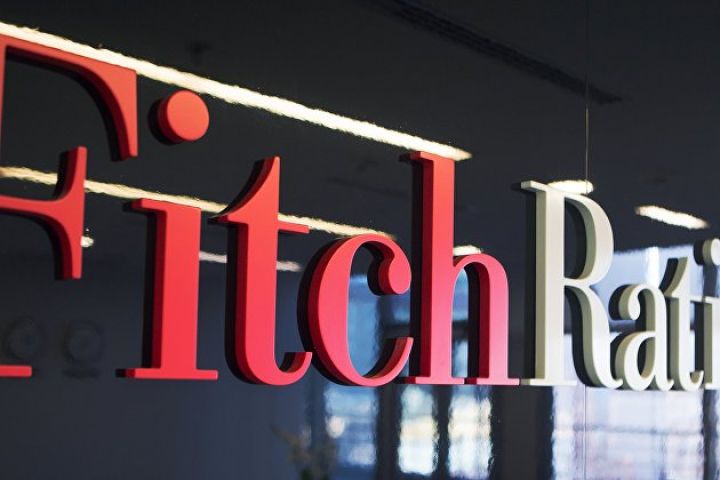
"Azərbaycan və Türkiyə ilə münasibətlərinin normallaşması Ermənistanın iqtisadi perspektivlərini yaxşılaşdıracaq"

Əmək qanunvericiliyində yeniliklər nələrdir?
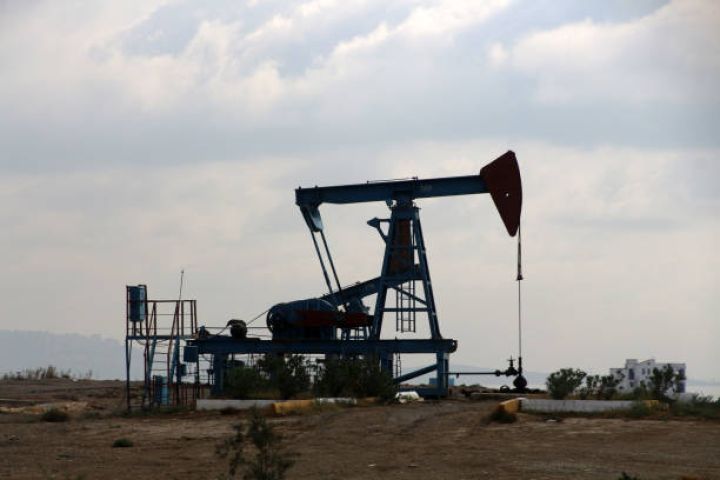
Azərbaycan neftinin son qiyməti

Dövlətə məxsus xidmət və yeyinti sənaye sahələri üzrə səhmdar cəmiyyətləri özəlləşdirilir - ADLARI

Dekabrda Azərbaycanda sabit genişzolaqlı internetin sürəti 3%-dən çox, mobil internetin sürəti isə 6%-dək artıb

Bakcell və Gənclər Fondu “İnnovasiya və Süni İntellekt” üzrə təqaüd proqramını elan edir

Mənzil axtaranların diqqətinə: Yasamalda büdcəyə uyğun, tam təmirli mənzillər satışda


